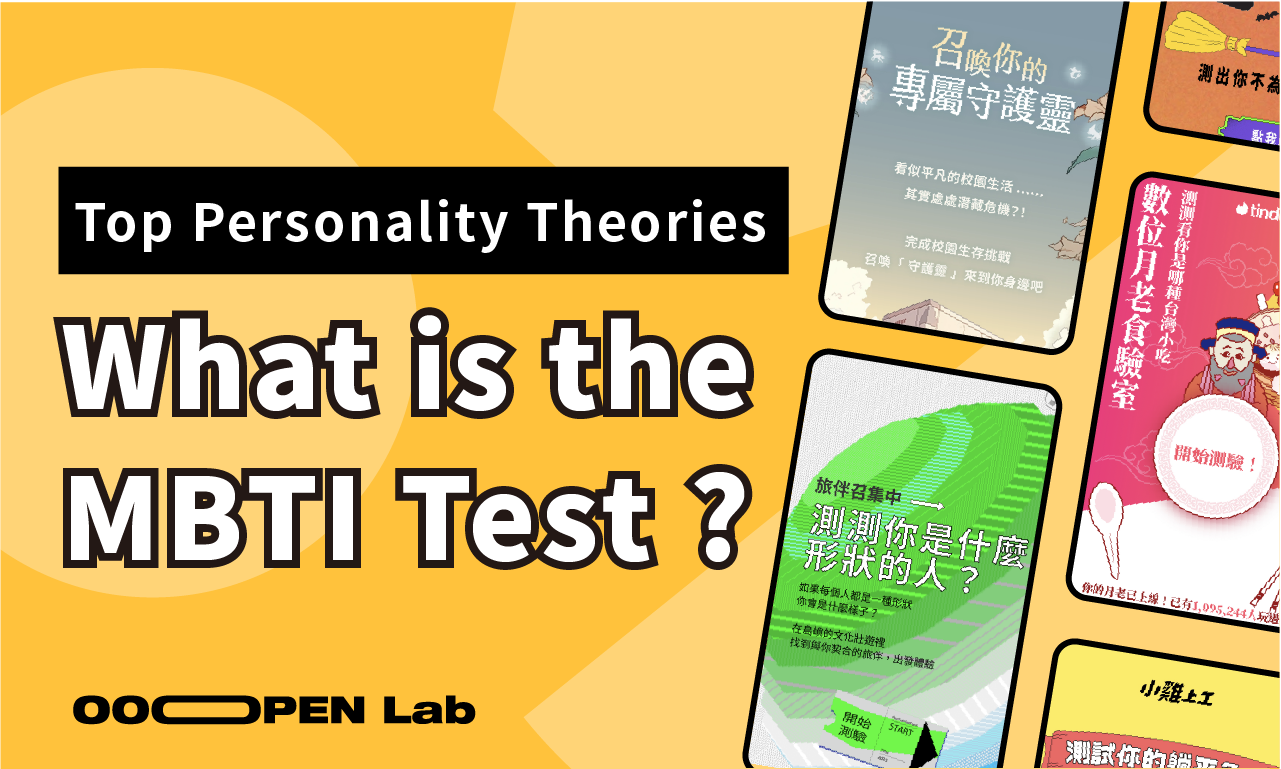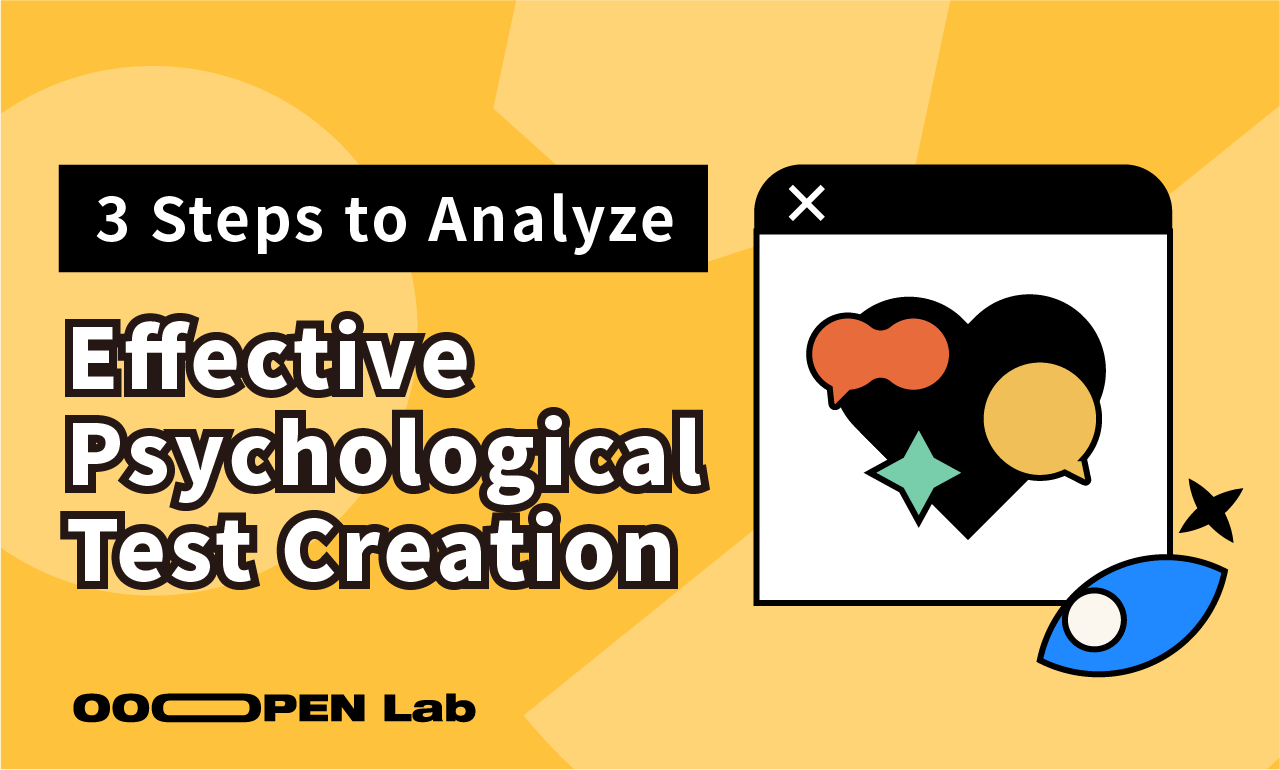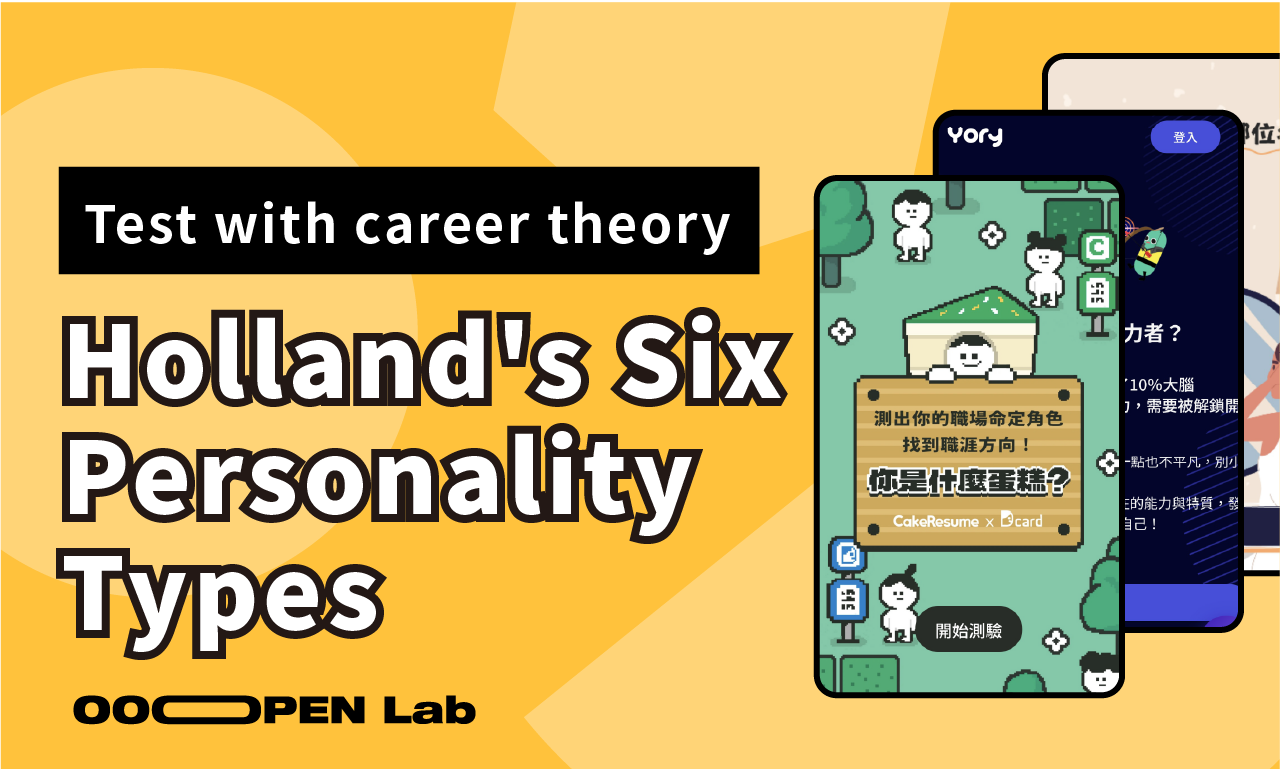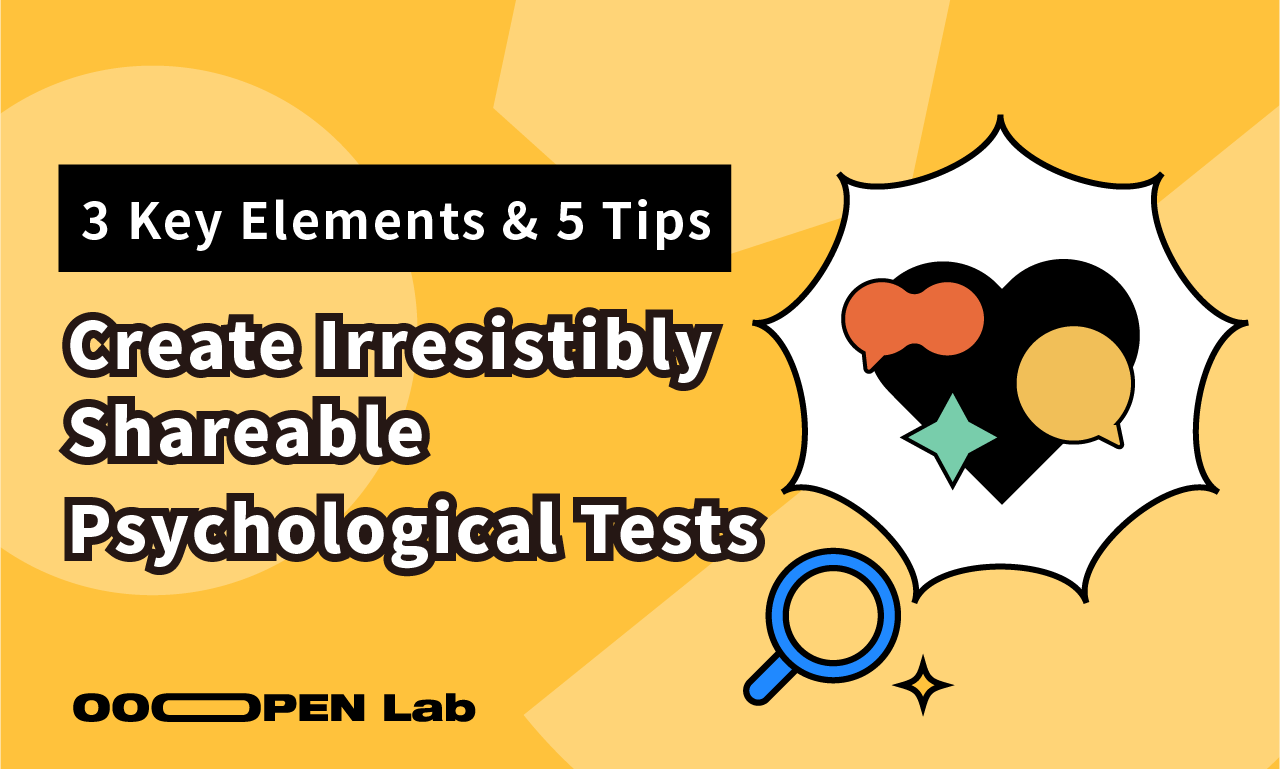MBTI is one of the most common applied theories, helping people understand themselves through detailed analysis and case studies. With a multidimensional model, you can create engaging and meaningful psychological tests!
Table of Contents
- Table of Contents What is the MBTI Test?
- Why Is the MBTI Test So Popular?
- How Does MBTI Categorize Personality Types?
- Ways of Gaining Energy: Introversion (I) / Extraversion (E)
- How They Receive Information: Sensing (S) vs. Intuition (N)
- How They Make Decisions: Thinking (T) vs. Feeling (F)
- How They Respond to the Outside World: Judging (J) vs. Perceiving (P)
- What Are the 16 Personality Types in MBTI?
- 5 Popular Psychological Tests Successfully Using MBTI Theory
- Test Your Lying-Down Angle MBTI Love
- Test MBTI Love Version
- Digital Matchmaking Laboratory Test
- What Shape You Are (No Longer Available)
What is the MBTI Test
The MBTI test, short for Myers-Briggs Type Indicator, categorizes people into 16 personality types based on 4 dimensions and 8 aspects. Through 93 questions, the test assesses how respondents gain energy (E/I), receive information (S/N), make decisions (T/F), and respond to the outside world (J/P). These answers are then analyzed to provide a 16-type personality result.
Developed by Katharine Briggs and Isabel Briggs Myers, the test extends Carl Jung’s personality type theory. During World War II, there was a need for aptitude tests to help people find suitable jobs. Myers believed that understanding oneself better would allow people to help each other and utilize their strengths, which became the foundation of the MBTI test.
Today, the MBTI test is widely adopted by many companies and organizations worldwide, becoming a significant industry. It has recently become especially popular in South Korea, where it is used not only for careers but also in topics like love, interpersonal relationships, and psychological test games. The MBTI test has become a trending keyword, sparking much discussion and sharing. There are now many online free MBTI tests available for people to try.
Why is the MBTI Test So Popular?
A simple and clear answer: understanding oneself is a timeless topic. People love to learn about themselves through various means, such as astrology, blood types, and personality tests. Topics like these always spark discussions. Personality tests like the MBTI are especially popular because they involve the test-taker actively participating and providing personal information, making the results feel more credible and valuable.
Besides, the MBTI test is backed by an extensive system. Once you complete the test and identify your personality type, you can find endless explanations online related to your type, helping you explore aspects of your personality you didn’t even know about. In South Korea, many celebrities have started taking the MBTI test, which has further boosted its popularity. When celebrities openly share their MBTI types, the public not only gets a glimpse into their personalities but also feels a stronger connection to their idols, especially if they share the same MBTI type.
How Does MBTI Categorize Personality Types?
Everyone has different ways of thinking and interacting with the world. The MBTI test categorizes these various traits and preferences into four dimensions: obtaining energy, receiving information, making decisions, and responding to the outside world. Each dimension has two opposite orientations. By assessing a person’s preferences in these four dimensions, the MBTI test classifies individuals into one of 16 personality types.
Ways of Gaining Energy: Introversion (I) / Extraversion (E)
The difference between I and E lies in their opposite directions of gaining energy. I-types, or introverted people, recharge through solitude, adjusting their pace by focusing on their inner world. They prefer deep, meaningful interactions and may retreat into their own space when necessary.
Once they regain their energy, they reemerge into social settings. E-types, on the other hand, recharge through social interactions. They enjoy receiving attention and affirmation and are often eager to express their opinions. Speaking helps them think and clarify their ideas.
It’s important to note that this classification only reflects the direction of energy acquisition, not ability. An introverted person can be skilled at socializing, while an extraverted person might be very good at being alone.
How They Receive Information: Sensing (S) vs. Intuition (N)
S and N indicate how people perceive the world through different sources. Sensing (S) individuals rely on information from their five senses. They focus on the present and the details of the real world, finding practical ways to solve problems. T
hey prefer concrete ideas over abstract or intangible concepts and tend to concentrate on their immediate surroundings. Intuitive (N) individuals, on the other hand, pay less attention to details.
They focus more on the broader picture and overall direction of things, often seeing possibilities and future potential. Because they tend to understand things in a general way, they sometimes make conclusions that are too hasty or idealistic for the actual situation. However, this only describes how they perceive the world, and it doesn’t necessarily relate to how they act or live in reality.
How They Make Decisions: Thinking (T) vs. Feeling (F)
T and F refer to how individuals process incoming information and make decisions based on thinking and feeling, respectively. When presented with external information, Thinking (T) individuals let their minds take charge.
They objectively consider the facts, immediately analyzing them rationally and responding with logical thought. They focus on efficiency and are always problem-solving oriented, keeping personal emotions from interfering too much. Feeling (F) individuals, on the other hand, prioritize their own and others’ feelings.
They are empathetic and warm, often preferring to follow their emotions rather than strict accuracy when handling and deciding on matters. They might interpret objective criticism as personal evaluation and can sometimes fall into self-criticism.
How They Respond to the Outside World: Judging (J) vs. Perceiving (P)
This dimension reflects different attitudes towards life: J prefers order and control, while P leans towards spontaneity and flexibility. Judging (J) individuals try to understand everything and fit all tasks into a plan, then follow it as closely as possible, tackling one goal at a time.
They often prepare multiple backup plans and enjoy the feeling of having everything under control. Perceiving (P) individuals, on the other hand, are more casual and adaptable.
They don’t attempt to control everything but respond spontaneously to events. They don’t believe there is a “should” in how things are done and rarely make detailed plans, preferring to keep life full of possibilities.
What Are the 16 Personality Types in MBTI?

- ISTJ: Reliable and task-oriented, they prefer working with clear instructions, possess strong responsibility, and make decisive decisions based on practical data. They are also conservative and traditional, sometimes seen as rigid, impersonal, or inflexible.
- ISFJ: Stable and dependable, not prone to changes. They enjoy helping others and are good at considering others’ needs, sometimes to the point of people-pleasing. They value commitments and loyalty, often being great teammates at work or in relationships.
- INFJ: Highly empathetic, often able to deeply understand others’ emotions, sometimes taking on others’ feelings as their own. They enjoy helping others in their unique way and are idealistic humanitarians who hope to realize their ideals through their work.
- INTJ: With exceptional insight and integration abilities, they excel at seeing the big picture and making comprehensive plans for goals. They trust their thinking and problem-solving skills and are not easily influenced by others. They dislike socializing and can sometimes appear cold and distant.
- ISTP : Skilled in analysis and logical thinking, they prefer hands-on creation or repair of objects, value efficiency, and enjoy challenges. They remain calm in crises and quickly find practical solutions. Though they may appear quiet, they will not easily back down when their principles are challenged and will stick to their beliefs.
- ISFP : Highly sensitive to the emotions and needs of those around them, they respond and provide support quickly. They enjoy cooperative environments and often remain humble. Sometimes, they may hesitate in decision-making due to considering others too much. They approach change with an open and gentle attitude and are willing to invest time in building long-lasting and loyal relationships.
- INFP : Idealists who seek to live out their values through their actions, they enjoy fostering growth and potential in others. They are accommodating but prefer working with like-minded individuals. Highly adaptable and introspective, they are often seen as living within their own set of values and worldview.
- INTP : They prefer to understand things through abstract and concise thinking patterns and can develop innovative solutions for complex problems. Focusing on the big picture, they may sometimes overlook details. They enjoy logical thinking and specialized knowledge, dedicating significant time and effort to study subjects that interest them.
- ESTP : Full of energy, they focus their efforts on the present, actively seeking effective solutions and excelling at finding logical and efficient answers to problems. They grow through practical actions but may struggle with long-term planning due to their impatience with lengthy or abstract matters.
- ESFP : They love and actively enjoy life, thriving on social interactions. They are observant and supportive, often seen as friendly and easygoing, acting as a lubricant in group dynamics. They perform better in collaborative environments, where teamwork enhances their work and learning outcomes.
- ENFP : Highly motivated with excellent insight, they trust their judgment and act confidently, seeking recognition and encouragement. They are warm and eager to connect with others but may struggle to stick to plans, relying more on improvisation. Providing them with flexible space allows them to excel.
- ENTP : Energetic and thriving in fast-paced environments, they are quick thinkers who can adapt to new strategies and enjoy challenges. They are proactive in trying new things but may be perceived as easily distracted due to their constant pursuit of novelty.
- ESTJ : Valuing practical and logical analysis, they integrate resources and plan systematically. With a strong sense of responsibility and a pursuit of efficiency, they are reliable executors. However, their absolute results orientation can sometimes make them overly assertive, neglecting others’ feelings.
- ESFJ : They value team cohesion and enjoy the sense of belonging from close team relationships. Skilled at gathering information and planning, they appreciate and expect recognition for their efforts, hoping everyone contributes to the team’s success. Socially adept and empathetic, they provide significant emotional support to others.
- ENFJ : Friendly, enthusiastic, and respectful, they see potential in others and support their development. Highly empathetic, they often perceive others’ needs and have the ability to unite diverse individuals to achieve common goals. They can flexibly play both follower and leader roles to help the team succeed.
- ENTJ : Natural leaders who quickly identify logical flaws and enact changes with a firm, sometimes insensitive approach. They excel at creating phased plans for long-term goals and decisively utilize resources and manpower. Attracted to professional knowledge, they also enjoy conveying it to others.
5 Popular Psychological Tests Successfully Using MBTI Theory
To create a psychological test using MBTI theory, we first need to understand what a multi-dimensional test is.
A multi-dimensional test is an advanced version of a typical psychological test game. It includes multiple dimensions, each leading to an answer. The combination of answers from all dimensions forms the test result. MBTI is one of the most common applications of multi-dimensional tests.
Although it might sound complicated, the OOOPEN Lab’s multi-dimensional test module simplifies the process. You can easily create a psychological test based on the MBTI framework in just four steps.
Find Your Inner Circle! Discover What Attribute You Possess

How else can you play with the MBTI test? The promotional team incorporated elements from “Pokémon” and various tags and quotes, successfully attracting and spreading shares on social media! During the answering process, fun situational questions and charming animations engaged participants, leading them through 12 questions step by step.
What Little Monster Lives in Your Heart?

Everyone has a little bit of mischievous personality inside them. What is your inner demon monster? Hahow designed 10 quick questions to find out your representative monster based on scenarios like pranking friends or holding grudges 😈 Unlike the typical MBTI tests that usually describe positive personality traits, this test analyzes your dark traits from the 16 personality types, giving you a unique description different from traditional MBTI tests upon completion !
Test Your Lying-Down Angle

This immersive psychological test takes you through 20 job-related scenarios to determine your MBTI type (the result can only be seen after downloading it on a computer). Each personality type corresponds to a unique, cute character, and the test incorporates relevant data from the 16 personality types to provide information on rarity and activeness for each character.
Using the MBTI framework to create a psychological test ensures that the results are backed by a comprehensive theory. This not only enhances the formulation of questions and presentation of results but also provides concrete content for reference. For test-takers, this adds significant value, making the test results more reliable and insightful.
Digital Matchmaker Food Lab

The 16 personality types are detailed and distinctive, making them ideal for use as results in psychological test games. They can often be materialized or concretely represented in ways that the test creators desire. In the Digital Matchmaker Food Lab test, different personality types are compared to traditional Taiwanese snacks. This demonstrates MBTI’s versatility in combining with various psychological tests. Regardless of the test type or question direction, if the content is interesting and backed by MBTI’s solid theoretical foundation, it can easily capture the interest of test-takers.
Test What Shape You Are (No Longer Available)

The widely shared psychological test game on social media, “Test What Shape You Are,” was also created based on the MBTI template. This test simplifies MBTI questions, guiding respondents towards corresponding personality types.
Although the results use various shapes to represent personality type names, the textual content still references the descriptions of the 16 personality types. Despite ongoing debates within the psychology community regarding the scientific basis of the MBTI test, its credibility in popular psychology remains strong. People enjoy taking MBTI tests, and this cannot be denied. Therefore, psychological test games based on MBTI theory continue to have a positive impact.
A fully developed MBTI test, complete with theory, questions, and personality types, not only accelerates the conceptualization process but also adds a touch of relevance upon launch. This makes it a valuable method for creating psychological test games. Similar types of tests, such as the Holland Code test, can also serve as theoretical references when designing tests.
After creating over 60 customized psychological tests at RE:LAB (the OOOPEN Lab team), we have distilled the essential principles of successful test creation (such as a simple and smooth experience, subtle positive feedback, etc.). By following the guidelines of the multidimensional test module, you too can produce a comprehensive and engaging MBTI test!





